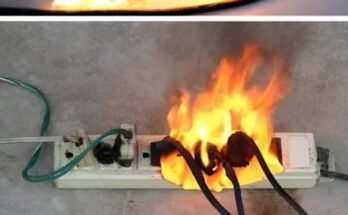Pilar Cyst Removal from Scalp: What You Need to Know
Are you considering getting a pilar cyst removed from your scalp? If so, you’re not alone. Pilar cysts are common, benign growths that develop on the scalp and can be easily removed by a dermatologist or a healthcare provider. In this article, we will take a closer look at the process of pilar cyst removal from the scalp, including what to expect before, during, and after the procedure.
What is a Pilar Cyst?
Before we dive into the details of pilar cyst removal, let’s first understand what a pilar cyst is. A pilar cyst, also known as a trichilemmal cyst, is a fluid-filled sac that forms just below the skin’s surface. These cysts are typically round or oval in shape and can vary in size. While pilar cysts are usually painless, they can sometimes become inflamed or infected, leading to discomfort or even pain.
Why Remove a Pilar Cyst?
There are several reasons why you may consider having a pilar cyst removed from your scalp. Some people choose to remove pilar cysts for cosmetic reasons, especially if the cyst is large or in a visible area. Others may opt for removal if the cyst is causing symptoms such as pain, tenderness, or itching. In some cases, a healthcare provider may recommend removal if the cyst is at risk of becoming infected or if there is concern about the growth being cancerous.
The Pilar Cyst Removal Process
When you visit a dermatologist or healthcare provider for pilar cyst removal, the first step is typically a physical examination of the cyst. Your provider will assess the size, location, and characteristics of the cyst to determine the best course of action. In most cases, pilar cyst removal is a minor surgical procedure that can be performed in a healthcare provider’s office.
During the removal process, the area around the cyst will be numbed with a local anesthetic to minimize discomfort. Your healthcare provider will then make a small incision in the skin and carefully remove the cyst along with its contents. The incision is usually closed with sutures or adhesive strips, and a bandage may be applied to protect the area as it heals.
Recovery and Follow-Up Care
After pilar cyst removal, it is normal to experience some mild discomfort, swelling, or redness in the area. Your healthcare provider may recommend over-the-counter pain medication to help manage any pain or discomfort. It is essential to keep the area clean and dry during the healing process to reduce the risk of infection.
Most people can return to their normal activities within a few days of pilar cyst removal, although strenuous exercise and heavy lifting should be avoided for at least a week. Your healthcare provider will schedule a follow-up appointment to check the incision site and remove any sutures or stitches if necessary.
Conclusion
In conclusion, pilar cyst removal from the scalp is a common and relatively simple procedure that can be performed by a dermatologist or healthcare provider. Whether you choose to have a pilar cyst removed for cosmetic reasons or due to symptoms, it is essential to seek professional medical advice to ensure a safe and successful outcome. If you have a pilar cyst that you are considering having removed, schedule a consultation with a healthcare provider to discuss your options and develop a treatment plan tailored to your needs.
Meta Description (max. 155 characters): Learn all about pilar cyst removal from the scalp, including the process, recovery, and follow-up care. Contact a healthcare provider for more information.

